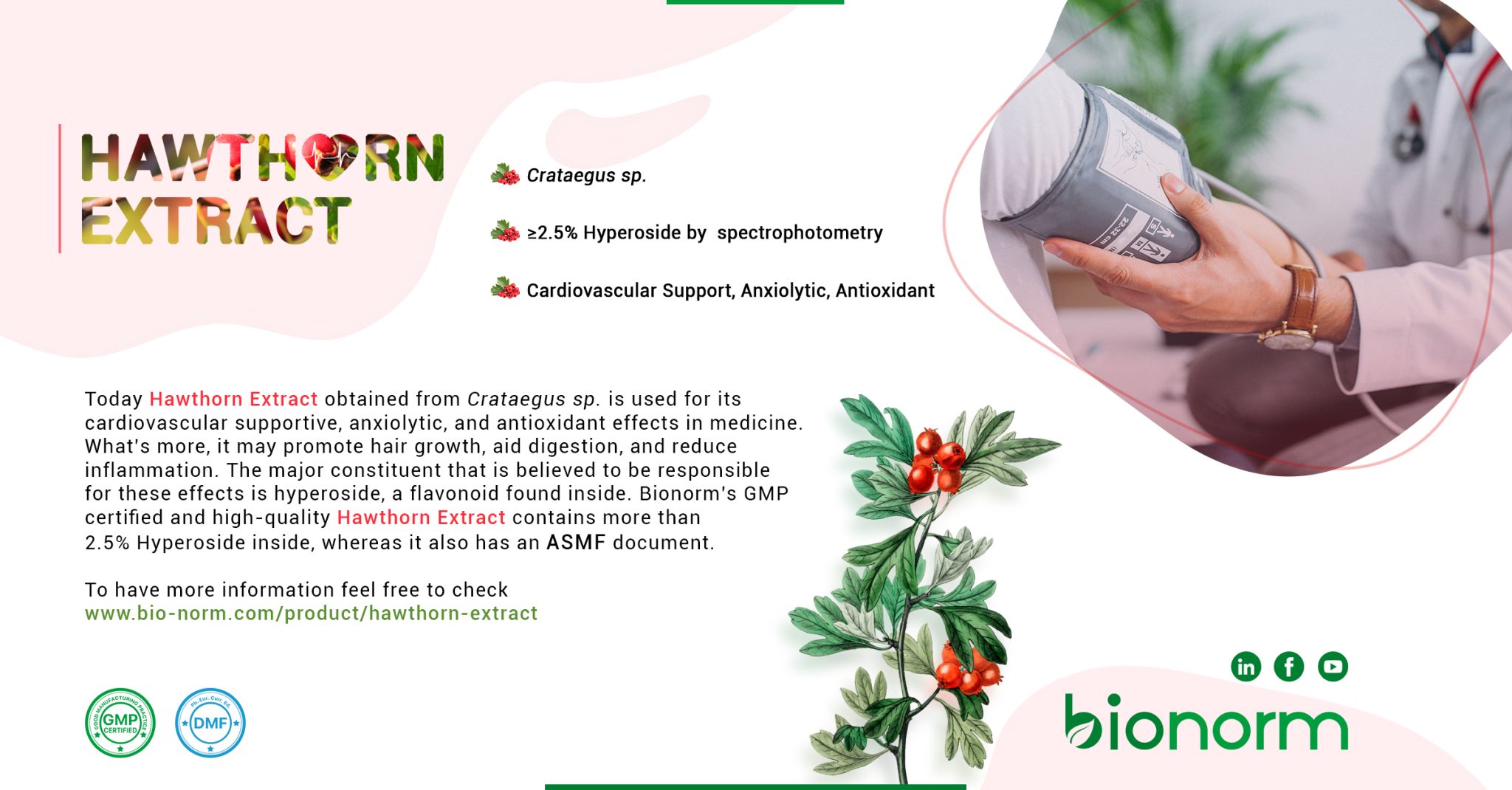
Hawthorn is a common name of the leaves and flowers of Crataegus sp. that belong to the Rosaceae family. Hawthorns are attractive ornamental trees that are generally selected to be grown even in average-sized gardens. They can be found in Mediterranean as natives. Hawthorns generally grow up to 5-15m long with their thorny branches. Its beautiful flowers can be seen in spring. In autumn, Hawthorns become more attractive with their glossy fruits and colorful, interesting leaves. Also, it produces a sweet scent to attract butterflies and some other insects that help in pollination.
Medicinal Usage
The earliest records declared the Hawthorn tree as a symbol of love. This should not be a coincidence since the cultures that traditionally used the leaves and berries of the Hawthorn tree employed it as a tonic for the heart. The leaves, flowers and berries of Hawthorn are used in the history for medicinal purposes.
Clinical Studies
The medicinal effects of Hawthorn extract have been shown in the literature with lots of studies until today. In a review published in 2008, it was shown that Hawthorn might help to cure physiologic outcomes of chronic heart failure. The review included results of 14 trials that are obtained over 855 patients suffering from chronic heart failure. It was also stated that the usage of Hawthorn as a supporting treatment to chronic heart failure, an improvement was seen in exercise tolerance and symptoms, like shortness of breath and fatigue. (1) In another study made in 2006, it was discovered that the uptake of 1200 mg of Hawthorn extracts daily lowered the blood pressure of people who are using prescription drugs to treat type 2 diabetes. (2) What’s more, a study published in 2018 suggested that Hawthorn might reduce the levels of blood fats, even cholesterol, and help prevent atherosclerosis. (3) To conclude Hawthorn extract provides safe and effective treatment for the early stages of heart disease, angina, myocarditis, arteriosclerosis, nervous conditions like insomnia, and diarrhea. It also strengthens blood vessels, vascular insufficiency and blood clots, restoring the heart muscle wall, lowering cholesterol and to aid digestion.
Chemistry Behind
The characteristic constituents of Hawthorn leaf and flower extract are flavonoids (such as vitexin, rutin, hyperoside), proanthocyanidins and phenolic acids. Berries, leaves, and flowers of hawthorn are phytochemically similar in composition, differing primarily in the ratio of specific flavonoids and procyanidins present. The main content known as Hyperosides are believed to be responsible for Hawthorn Extracts medicinal effects. Bionorm’s Hawthorn extract contains more than 2.5% of Hyperoside. The mature Hawthorn leaves and berries are collected carefully by Bionorm to produce this high-quality extract. Furthermore, Hawthorn extract is GMP certified and ASMF documented. For more information about Bionorm’s GMP and DMF certified Hawthorn extract check out https://bio-norm.com/product/hawtorn-extract/.
References
- Guo R, Pittler MH, Ernst E. Hawthorn extract for treating chronic heart failure. Cochrane Database of Systematic Reviews 2008, Issue 1. Art. No.: CD005312. DOI: 10.1002/14651858.CD005312.pub2. Accessed 14 March 2021.
- Walker AF, Marakis G, Simpson E, Hope JL, Robinson PA, Hassanein M, Simpson HC. Hypotensive effects of hawthorn for patients with diabetes taking prescription drugs: a randomised controlled trial. Br J Gen Pract. 2006 Jun;56(527):437-43. PMID: 16762125; PMCID: PMC1839018.
- Wang, Sz., Wu, M., Chen, Kj. et al. Hawthorn Extract Alleviates Atherosclerosis through Regulating Inflammation and Apoptosis Related Factors: An Experimental Study. J. Integr. Med. 25, 108–115 (2019). https://doi.org/10.1007/s11655-018-3020-4

